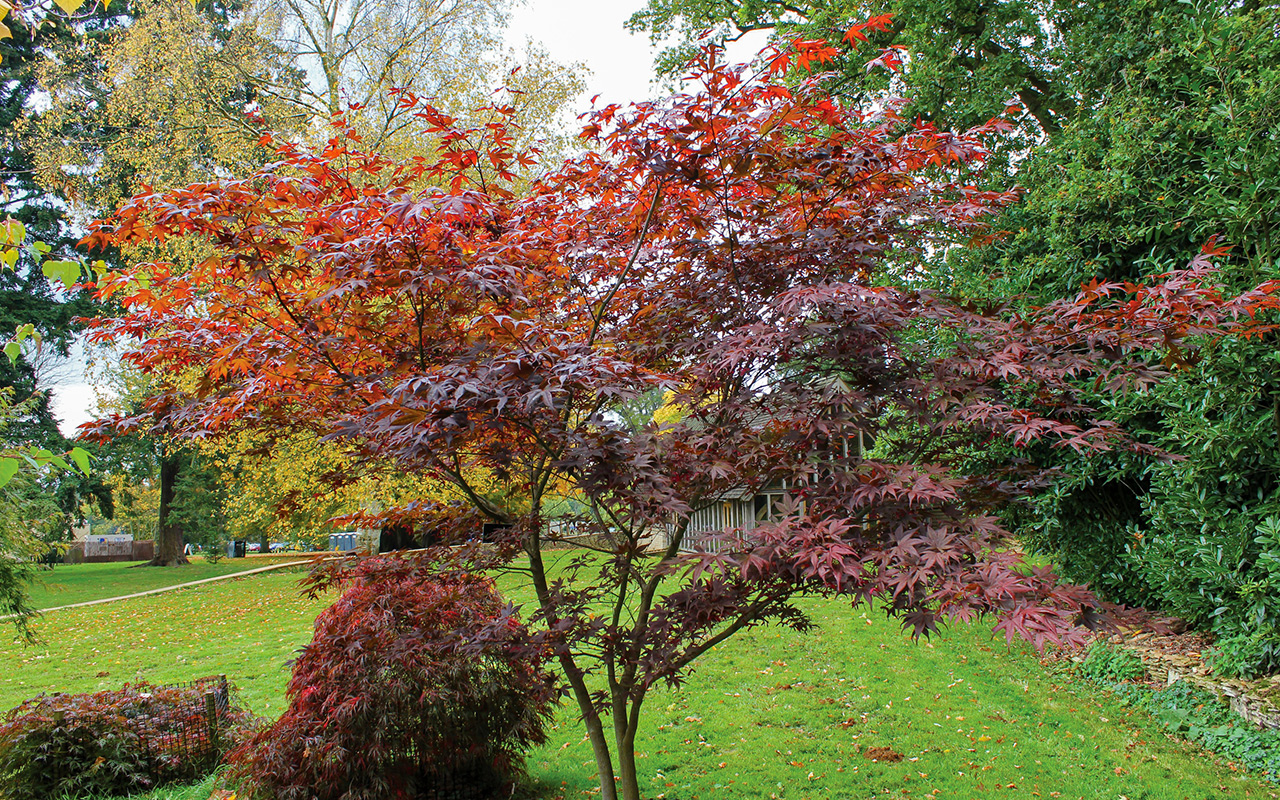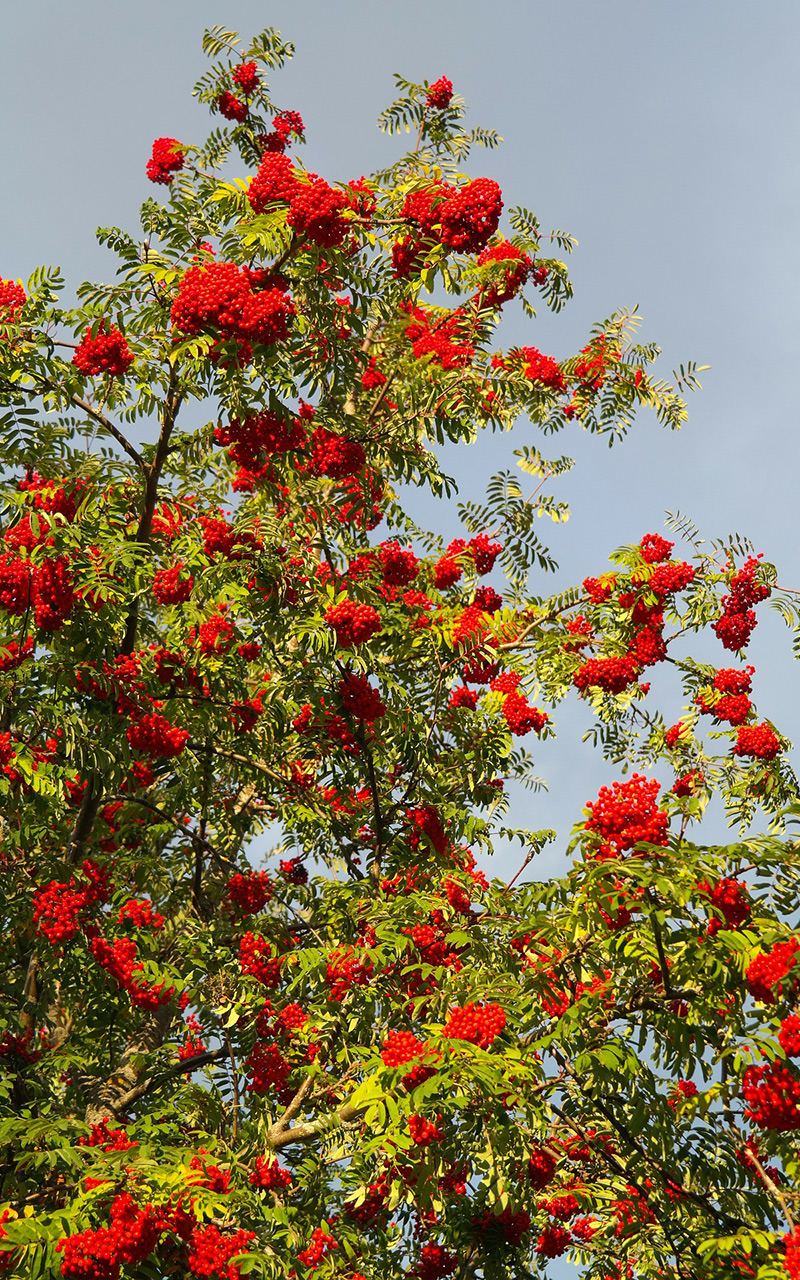Menu
 Trees for all seasons – and all gardens
Trees for all seasons – and all gardens
As we start to move into autumn, which officially starts at the equinox on 23rd September this year (regardless of what the weather is doing!), it’s a great time to start thinking about planting a tree in your garden. Arguably, any time of year can be good to plant a tree as long as the ground is not frozen, water-logged or baked hard but October to March are perhaps the optimal times here in the south of England.
Why do we need trees?
It might seem like an obvious question but why might you want to put a tree in your garden? There are lots of reasons but here are just a few of them:
If you want to read more about the importance of trees, we love this article from the Woodland Trust.
Choosing the right tree
There are a number of practical considerations that will help you pick the right type of tree to suit your garden:
Where will you plant it? Are there any other plants or buildings nearby? Planting anything that may get too large could overwhelm other plants in the area, potentially weakening them over time. Equally, planting a smaller tree under something much bigger won’t give it the best start. Planting a vigorous tree close to property could also have potential for the roots to undermine the buildings; think about planting something smaller in that case.
How big is your garden? What is its aspect (sunny, shady etc)? You will want to pick a tree that is appropriate to those conditions. That is not to say that a small garden needs a small tree; a large tree could be really dramatic and provide great shade, but a large tree may also be difficult to access from a smaller space. Of course, some trees grow tall but narrow (think of the classic Mediterranean cypress), which could provide the drama without the wide spread of branches. And some trees can be quite happy in large pots, which might suit a small garden or be a focal point in a larger garden.
What is your soil like? Is it always soggy or gravelly and free draining? Is it more acidic or neutral? (If you’re not sure, you can buy simple test kits to find out). There are trees that will suit any and all of these soil conditions but planting one that likes the soil in your garden will give it the best chance of thriving.
What do you want your tree to do? Does it need to provide year-round greenery (like an evergreen) or do you want it to produce fruits you can use (an apple or plum for example)? Do you want blossom in the spring or are you more of an autumn leaves person? Remember, trees potentially have four opportunities to wow you with their appearance, through their leaves, their flowers and tracery during winter, their fruits and their bark, so consider how it might look in each season.
Our suggestions for your garden
Trees in pots
 If you prefer to garden in pots, there are trees that will suit you. You probably want to choose the largest pot that is practical for your space, place it on a discreet pot trolley so it’s easier to move and water it religiously. For us, we would go with a classic Acer palmatum in our pot. Their delicate leaves and open structure bring a touch of the exotic to any space. And the leaves turn such gorgeous colours in the autumn!
If you prefer to garden in pots, there are trees that will suit you. You probably want to choose the largest pot that is practical for your space, place it on a discreet pot trolley so it’s easier to move and water it religiously. For us, we would go with a classic Acer palmatum in our pot. Their delicate leaves and open structure bring a touch of the exotic to any space. And the leaves turn such gorgeous colours in the autumn!
Trees for smaller gardens
You probably want to choose a tree that gives great value for money in terms of year-round interest but one that isn’t going to crowd out everything else, including you! Amelanchier seem to be really popular with garden designers at present as they tick nearly every box. They are ornamental, not producing any edible fruits, but they flower and have a lovely autumn colour.

Trees for mid-sized gardens
The average garden in the UK is around 188 square metres, that’s around 11 x 17 metres or 36 x 56 feet, or a middle-sized garden. In this sort of space, we’d pick something like the Sorbus aucuparia, a native Mountain Ash or Rowan. With a central trunk and a bushy top, it has the profile of the typical ‘lollypop’ tree that a child might draw! It produces berries in the early summer which ripen to a rich orange-red in the autumn. The birds love them although, if you can get in first, home-made Rowan berry jelly has a sweet, tangy taste a bit like crab apple jelly and is delicious on toast instead of marmalade.
Trees for large gardens
If you are lucky enough to have space to play with, you can really plant almost any tree you want to. Although we are reminded of the saying that “you plant a magnolia for your grandchildren”: some trees that grow really big also take quite a long time to fully mature so you might want to consider who you are planting it for! Our pick in a bigger garden would be Acer platanoides, the Norway Maple. Taking probably 20 years to reach its full height and spread (over 12 metres and 8 metres respectively) it really is a splendid tree, and has lovely flower clusters in the spring.
How to plant your tree
Like much in life, preparation is key when planting a tree. It’s unlikely that you will get to revisit it’s roots again once it’s in the soil so giving it the best start will be essential to its success.
Unless we have really torrential rain, we’d always recommend watering your new tree regularly – at least twice a week – in its first year until the roots establish. You might also like to consider a mulch around the base, to keep in moisture and suppress weeds; a natural mulch material could also provide extra nutrition as it breaks down.
For further advice on tree-planting, try this useful guide from the RHS.
 In celebration of trees
In celebration of trees
2022 is a great year to think about planting a tree as you could take part in the Queen’s Jubilee ‘Green Canopy’ initiative. Every tree makes a difference and helps our environment. To read more about the scheme and see if you’d like to apply for your tree to be part of it, click here.
If you’re planning ahead, why not plant your tree in National Tree Week, which this year takes place each year at the end of November in to December. The Tree Council are planning events and webinars to mark the week, and you can find out more here.
Further tree-related reading:
How to winter prune your fruit trees
How to prune your trained fruit trees
The joy of autumn leaves – why do they change colour?
Topiary – fun or old-fashioned?
Time to plant a hedge
How to care for conifers
Hambrooks garden design, landscaping & garden maintenance throughout Hampshire for over 50 years.

